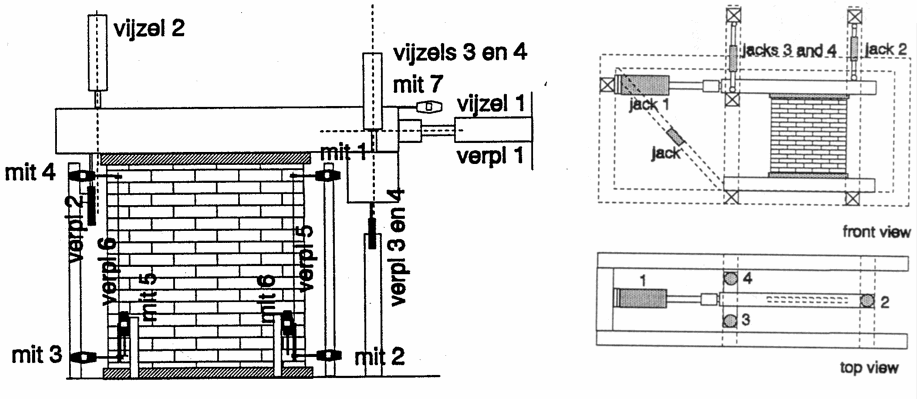G.P.A.G. van Zijl[1],[2], J.G. Rots1 and A.Th. Vermeltfoort[3]
- Faculty of Architecture, Delft University of Technology, Berlageweg 1, 2628 CR Delft, The Netherlands. G.P.A.G.vanZijl@bk.tudelft.nl, J.G.Rots@bk.tudelft.nl
- Dept. of Civil Engineering, University of Stellenbosch, Private Bag X1, 7602 MATIELAND, South Africa.
- Masonry Dept. of Structural Design, Eindhoven University of Technology,
ABSTRACT
During the past decade a combined experimental and computational Dutch structural masonry research program has produced a databank of small and medium scale experimental data as well as calibrated computational models. The computational models were formulated to capture the major features of separate experimental tension, shear and compression specimens. In return, specific experiments were designed to isolate individual mechanisms to calibrate and verify the models. In the meso-experiments the different mechanisms interact, placing an added demand on the models to capture this synergy. In this paper masonry shearcompression failure is investigated. Analytical shear-compression failure criteria have been proposed for masonry, yet, important phenomena like softening, or gradual degradation of shearing or compressive resistance, time dependence, or creep/relaxation are neglected. Such simplifications are not always conservative. The fact that some parts of a specimen have lost their strength partially, while others are still in tact, implies that a formulation based on average stresses may overestimate the strength. The ignorance of relaxation has been shown to lead to the overestimation of strength. On the other hand, dilatant volume growth upon shearing is a potential source of large ‘reserve’ strength. By constraint of such volume increase, either internally by the undamaged parts of masonry, or externally by connecting structural parts, internal compressive stresses build up. By the Coulomb-friction nature of masonry, this leads to a larger shear strength. Experimental evidence of this strength increase on the micro and meso scale is put forward. Computational models, which have been formulated over the last decade, are enhanced to capture these phenomena. Numerical results are compared with the experimental responses.
Key words: masonry, compression, shear, cracking, finite elements
falmc01



